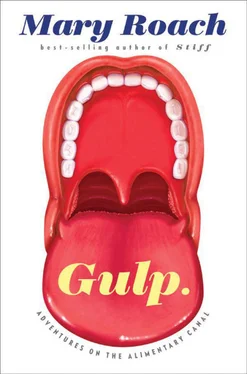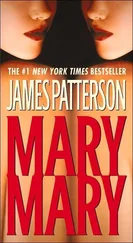Sometimes a patient would manage to capture the alleged tormentor and bring it in to show the doctor. While some physicians kept the animals for display in cabinets of curiosity—or, on occasion, as pets—those of a more scientific bent recognized an opportunity for forensic fact-checking. Jan Bondeson relates a famous case from the seventeenth century of a twelve-year-old who complained of abdominal cramping and, over an unspecified span of time, allegedly vomited twenty-one newts, four frogs, and “some toads.” One of the youth’s physicians had the bright idea of dissecting the amphibians’ stomachs. If the story were true, the food inside the little stomachs should reflect the creatures’ gastrointestinal habitat. Instead the stomachs contained half-digested insects. In 1850, Arnold Adolph Berthold, our man of the putrefied frog spawn, approached curators at German medical museums whose collections included reptiles and amphibians allegedly vomited or excreted after years of residence in a human digestive tract. Here again, when specimens’ stomachs were opened, many were found to hold insects in various stages of dissolution.
The most directed experimental debunking was carried out by J. C. Dalton, a physiology professor at the College of Physicians and Surgeons of New York. Over a span of several months in 1865, Dalton had twice been visited by flummoxed colleagues bearing “discharged” slugs in jars of alcohol. One was said to have come from a boy who had been suffering three weeks from diarrhea. The usual narrative ensued: “It was during this diarrhea that the slugs were passed. On that day, the mother, on removing the clothes from the child after a fecal evacuation, found among them one of the animals, alive and moving.” She assumed he’d inadvertently consumed slug eggs while eating garden greens on a family visit in the countryside, where the boy had “passed a part of the summer”—an alarming verb choice under the circumstances.
Dalton was dubious. “I accordingly thought it worthwhile to institute some experiments, with a view of ascertaining how far such a thing might be possible.” Garden slugs were procured from a neighborhood lettuce bed. An assistant held a dog’s mouth open while Dalton placed four slugs, one at a time, at the far back of its mouth to get it to swallow without chewing. An hour later, Dalton took out his scalpel. He found “no recognizable traces of slug” anywhere along the dog’s alimentary canal. In subsequent experiments, just fifteen minutes rendered a slug “somewhat softened” and a salamander “exceedingly soft and flaccid,” and both dead.
“It is a curious psychological phenomenon,” wrote Dalton, “to witness the thorough confidence… and the fullness of detail with which intelligent persons will sometimes relate these stories…. When the accounts come to us second hand, we can always make abundant allowance for the natural growth of wonders, in passing from mouth to mouth. But even when the facts stated are those which came under the relator’s own observation, the discrepancy between his convictions and the truth may sometimes be equally remarkable.”
Wise words, no less applicable today. It is 2011 as I write this, and the story endures. Only now the lizards and frogs are on the outside.
9. Dinner’s Revenge
CAN THE EATEN EAT BACK?


THE DARKLING BEETLE, small and shy with an understated matte-black carapace, is better known as its adolescent self, the mealworm. Mealworms and their darkling cousins the superworms are popular “live feeders”—food for pet reptiles and amphibians that won’t eat prey that’s already dead. For years, a disconcerting rumor has bounced around the “herp” (as in, herpetofauna) community. Heed the words of Fishguy2727, posting on Aquaticcommunity.com: “I have talked to a number of people who have FIRST-HAND watched with their own eyes as the animal ate a mealworm,… and within ten to twenty seconds the mealworm is chewing out of the animal’s stomach.”
I heard about the phenomenon SECOND-HAND from wildlife biologist Tom Pitchford. The mealworm came to mind when I asked Tom whether he knew of any nonparasitic creature that could survive in a stomach for any length of time. He had heard that some online herp forums recommend crushing mealworms’ heads prior to serving. “While the insect is in its death throes, the lizard will come over and eat it.”
Mealworm ranchers scoff. “This is an old wives tale,” says Wormman.com. The owner of Bassetts Cricket (and mealworm) Ranch told me that a slice of carrot, for a mealworm, is a two-day project. “They can’t eat out,” he said. (Though obviously enough people worry about it that it has its own verb form.) But mealworm sellers have a financial stake in the matter. What do reptile and amphibian dealers say? Carlos Haslam, manager of the East Bay Vivarium, a reptile and amphibian store not far from my home, told me that in his forty years in the business, he has not seen the phenomenon nor heard a customer report it happening. He pointed out that lizards chew their food before swallowing. Frogs don’t, but lizards do. And most of the stories are about lizards. Fishguy2727 takes no comfort. “Just because 1,000 people have not had it happen to them does not mean it is impossible. There is no doubt that this can happen.”
As so often is the case with apocryphal tales like this, finding someone who knows someone who’s seen it is easy. Less easy is tracking down an actual eyewitness. One who claims to have seen is John Gray, the animal care technician at the Tracy Laboratory at the University of Nevada, Reno. His boss, Richard Tracy, is a physiological ecologist. He predicts hotspots of future extinction, with reptiles and amphibians as his focus. Eighteen lizards, forty toads, and fifty frogs are under John Gray’s care, but he has not seen it happen to any of them. It happened to a fence lizard he caught in his backyard as a twelve-year-old. He recalls feeding a superworm to his new pet in the evening, and finding the lizard dead the next morning with the superworm “hanging out of its side.”
Tracy is skeptical. He has a theory that the story took root in the public’s consciousness with the 1979 release of Alien , a film in which the title character hatches inside one of the crew and breaks through the skin of the man’s abdomen during a meeting. He questions Gray’s memory. Who can recall, with dependable accuracy, the details of an event that happened thirty years ago? One of the mealworm’s natural behaviors is to crawl underneath things. “Mealworms prefer darkness and to have their body in contact with an object,” says the University of Arizona Darkling Beetle/Mealworm Information sheet, under the heading “Interesting Behaviors.” The sheet’s authors make no mention of mealworms eating their way out of stomachs, which would, you’d think, qualify as interesting behavior. As with the post-laxative stomach slug and snake sightings of yesteryear, it seems more likely that the worm was already on the scene, seeking darkness and framed by happenstance.
However, like most people who work with captive reptiles and amphibians, Tracy has trouble completely dismissing the stories. He’s going to do what experimental biologists do in situations like this: experiment.
PROFESSOR TRACY HAS borrowed an endoscope. It is slimmer than most because it was designed to look up urethras. The scope belonged to a urologist whose daughter studied tortoises at the University of Nevada. He lent it to her to look inside tortoise burrows, and she has lent it to Tracy to watch mealworms inside stomachs. What goes around comes around, and up and in and through.
Читать дальше














